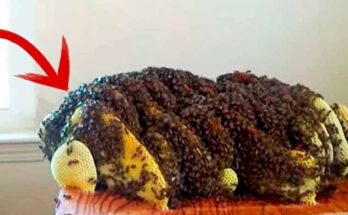Uncovering the Mysteries of the Lake in Oklahoma.
Residents of Oklahoma were puzzled when they discovered mysterious jelly-like sacs hanging from tree roots at McGee Creek Reservoir, leading to concerns about their origin. However, scientists quickly reassured the public, clarifying that these sacs are actually colonies of bryozoans—ancient organisms that have existed for over 470 million years.
The Oklahoma Department of Wildlife Conservation (ODWC) explained, “These are Bryozoans, and they’re likely to appear in large numbers this summer. Don’t be alarmed; these microorganisms are native and pose no danger to humans or wildlife. In fact, they’re a sign of good environmental quality and clear water!”
Bryozoans are composed of tiny zooids that filter water for food, contributing to a cleaner lake environment. Each colony can reproduce rapidly through self-cloning, making them a common sight in favorable conditions.
Although their appearance may be unusual, these organisms play a vital role in the ecosystem, helping to maintain the health of the lake by consuming phytoplankton and bacteria.
While the sight might be surprising, officials emphasize that bryozoans are a natural part of the environment and an indicator of a healthy, thriving lake.



